Ever had that moment where you’re all set to enjoy a juicy mango, only to cut it open and find it’s brown inside? Yeah, it’s a real bummer. But why is my mango brown inside? What’s turning our delightful mangoes into brown, less appetizing versions of themselves?
Well, you’re in luck because we’re about to dive into the 9 surprising reasons why your mango is brown inside. From overripe fruit to poor storage conditions, we’re going to uncover the mysteries of the brown mango. So, buckle up and get ready for a fruity adventure!
And hey, don’t worry. We’re not just here to bum you out with tales of brown mangoes. We’re also going to give you some tips on how to keep your mangoes fresh and delicious. So, let’s get started, shall we?
1-Overripe Mangoes
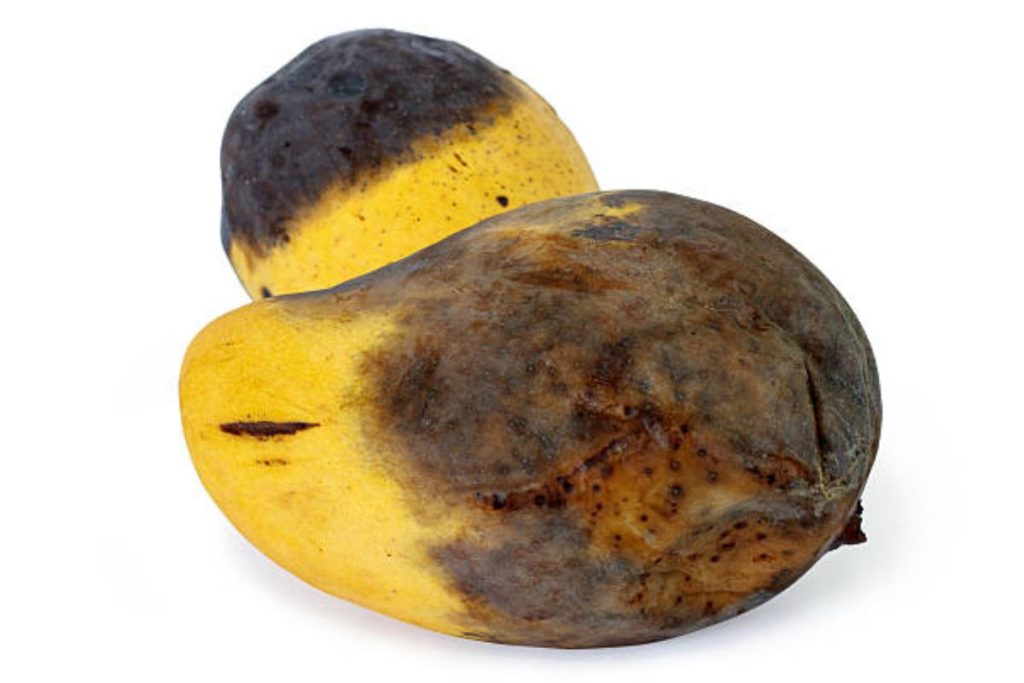
Alright, let’s start with the most common reason your mango might be brown inside – overripeness.
You know how avocados go from rock-hard to overripe in the blink of an eye? Well, mangoes can be just as tricky.
When a mango is perfectly ripe, it’s a thing of beauty. It’s sweet, juicy, and has a lovely orange color. But if you miss that perfect ripeness window, things can go south pretty quickly.
The mango starts to get super soft, and when you cut it open, you’re greeted with a brown, mushy mess instead of the vibrant orange you were hoping for.
So, how can you tell if a mango is overripe? Well, it’s all about the feel. If the mango is super soft and squishy, it’s probably overripe.
A perfectly ripe mango should have a slight give when you press it, but it shouldn’t feel like a water balloon.
And here’s a pro tip for you: if you have an overripe mango, don’t toss it! Overripe mangoes are perfect for smoothies or baking. So, even if your mango is a bit past its prime, it can still be a tasty treat!
2-Bruising in the Center
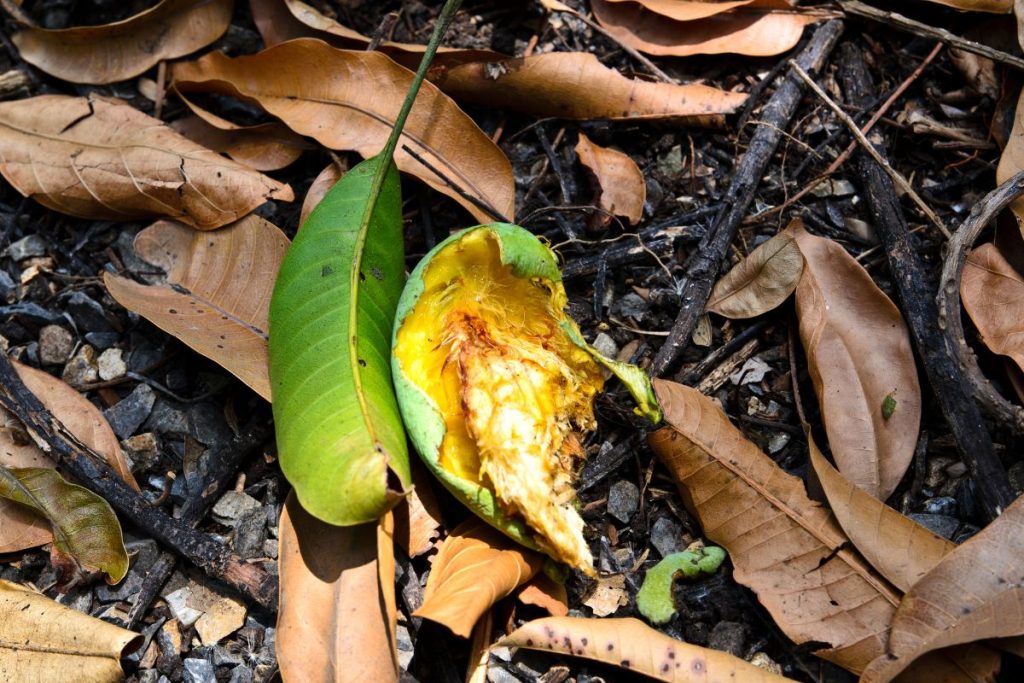
Now, let’s move on to the second reason your mango might be brown inside – bruising.
You know when you accidentally drop an apple and it gets a brown bruise? Well, the same thing can happen to your mangoes.
Mangoes are pretty delicate, and they can get bruised if they’re handled roughly or dropped.
This bruising can cause the flesh inside the mango to turn brown. It’s kind of like how you might get a bruise if you bump your arm or leg.
So, how can you prevent your mangoes from getting bruised? Well, it’s all about handling them with care. When you’re picking out mangoes at the store, be gentle. Don’t squeeze them too hard, and try not to drop them.
And when you’re transporting your mangoes home, make sure they’re well-protected. Don’t just toss them in the trunk of your car where they can get banged around. Instead, try to keep them in a separate bag or container where they’ll be safe from bumps and bruises.
Remember, a little care goes a long way in keeping your mangoes bruise-free and delicious!
3-Exposure to Hot Water
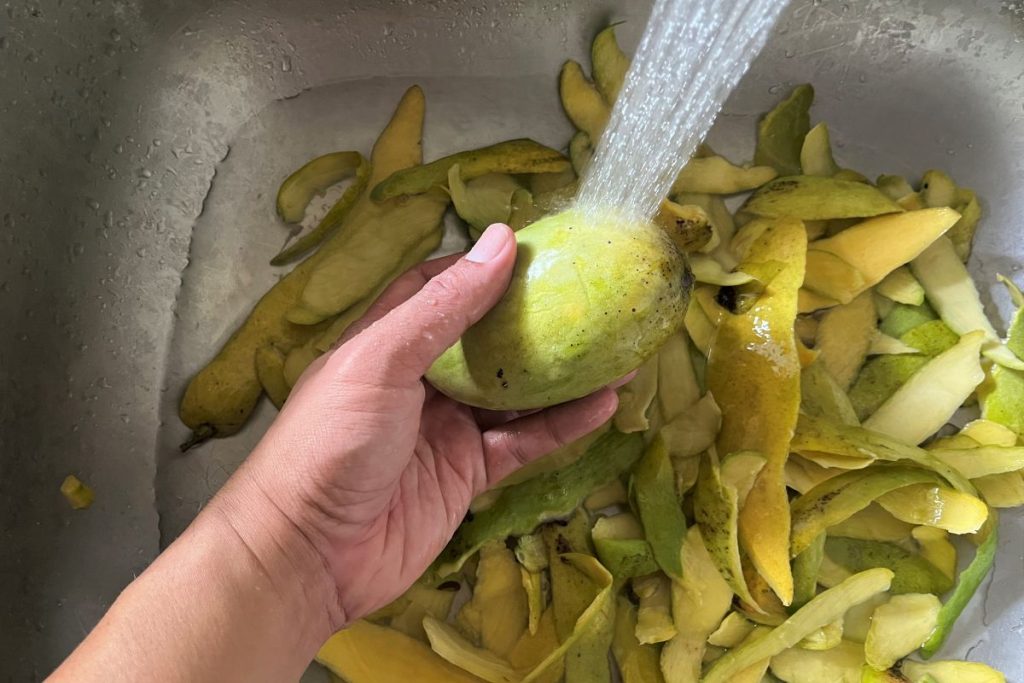
Moving on to the third reason, did you know that exposure to hot water can also cause your mango to turn brown inside? Yep, you heard it right!
Mangoes are tropical fruits, and they’re used to warm weather. But that doesn’t mean they like to take hot baths! If your mango has been exposed to hot water, it can cause the inside to turn brown. This is because the heat can start to cook the fruit, leading to a change in color.
This can happen if you’re trying to wash your mango in hot water, or if you accidentally drop it into a sink or pot of hot water. So, the next time you’re washing your mangoes, make sure to use cold or lukewarm water instead of hot.
And remember, if you’re cooking with mangoes, you want to add them towards the end of the cooking process to avoid overcooking them. Overcooked mangoes can lose their vibrant color and turn a dull brown. So, keep your mangoes cool and they’ll keep their beautiful orange color!
READ : Is Mango Acidic Or Alkaline?
4-Stored in a Cold Environment
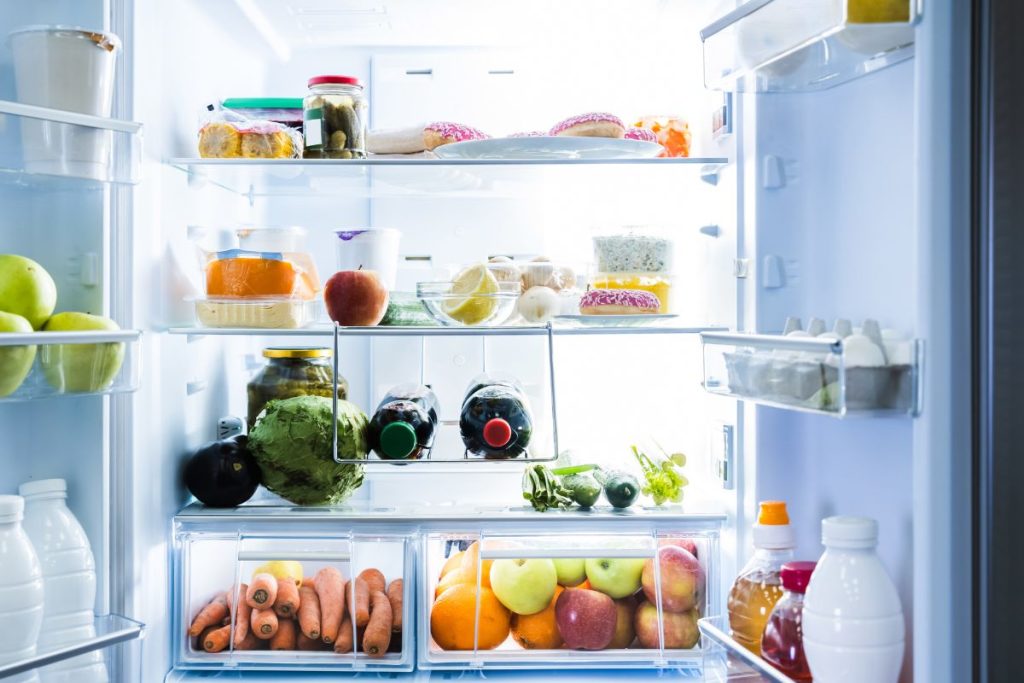
Alright, let’s move on to the fourth reason why your mango might be brown inside – it’s been stored in a cold environment.
Now, this might seem a bit counterintuitive. After all, we’re often told to keep fruits in the fridge to keep them fresh, right? Well, not always!
Mangoes are tropical fruits, and they’re not big fans of the cold. If you store your mangoes in the fridge, it can actually cause them to turn brown inside. This is because the cold temperatures can damage the cells inside the fruit, leading to browning.
So, what's the best way to store your mangoes? Well, it's best to keep them at room temperature until they're ripe. Once they're ripe, you can put them in the fridge to slow down the ripening process and keep them fresh for longer.
But remember, don’t leave them in there for too long, or you might end up with brown mangoes!
So, the next time you bring home a bunch of mangoes, remember to keep them out of the fridge until they’re ripe. Your mangoes (and your taste buds) will thank you!
5-Disease or Infection
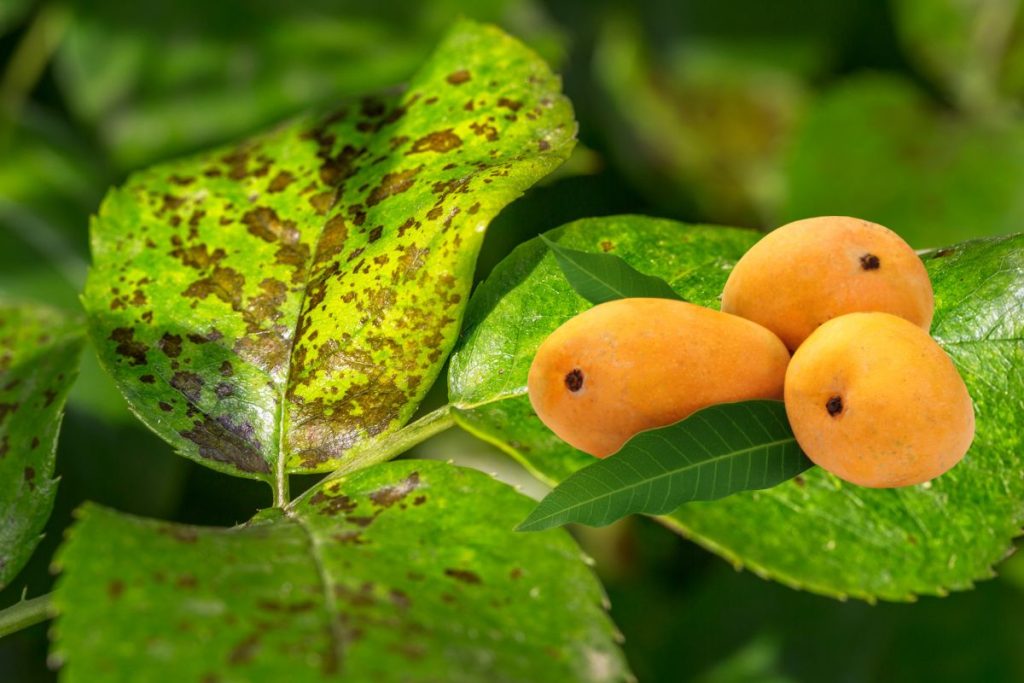
Now, onto the fifth reason – disease or infection. This one’s a bit less common, but it can happen. Just like humans, plants can get sick too, and this can affect the quality of the fruit they produce.
If a mango tree is infected with a disease or pest, it can cause the mangoes to turn brown inside. This is because the disease or pest can damage the fruit, leading to browning. Some common diseases that can affect mangoes include anthracnose, powdery mildew, and mango scab.[source]
So, how can you tell if a mango is infected? Well, it can be a bit tricky. Sometimes, the outside of the mango might look perfectly fine, but the inside is brown. Other times, there might be visible signs of disease on the outside of the fruit, like black spots or a powdery white coating.
If you suspect that your mango is infected, it’s best to not eat it. While most plant diseases won’t harm humans, they can make the fruit taste bad. Plus, you don’t want to risk spreading the disease to other plants.
So, remember to always check your mangoes for signs of disease or infection. And if in doubt, it’s best to err on the side of caution and not eat the mango.
6-Improper Harvesting
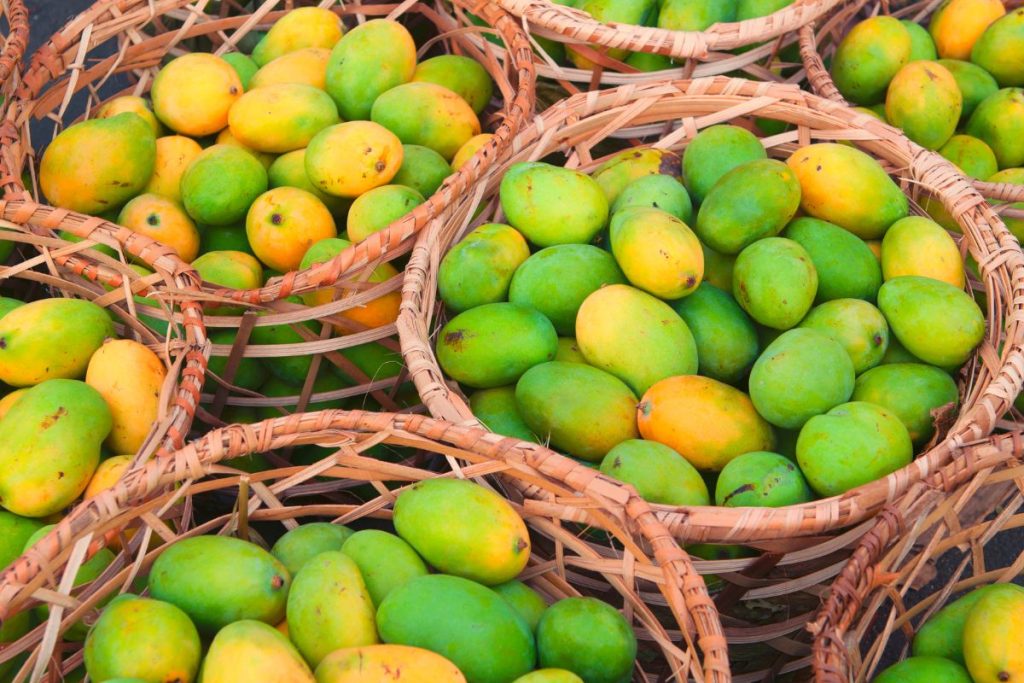
The sixth reason why your mango might be brown inside is due to improper harvesting. Yes, the way a mango is harvested can actually affect its quality!
If a mango is harvested too early, it might not have had enough time to fully develop, leading to a brown color inside.
On the other hand, if a mango is harvested too late, it might have started to overripen on the tree, also leading to browning.
Harvesting mangoes at the right time is a bit of an art. It usually involves looking at the color of the mango, feeling its firmness, and sometimes even smelling it. A ripe mango will usually be a vibrant orange color, have a slight give when you press it, and smell sweet and fruity.
Unfortunately, if you’re buying your mangoes from a store, you don’t have much control over how they were harvested. But don’t worry, most commercial mango growers know what they’re doing and harvest the mangoes at the right time. So, while improper harvesting can cause browning, it’s not a very common cause.
So, the next time you’re enjoying a mango, take a moment to appreciate the skill that went into harvesting it at just the right time!
7-Chemical Exposure
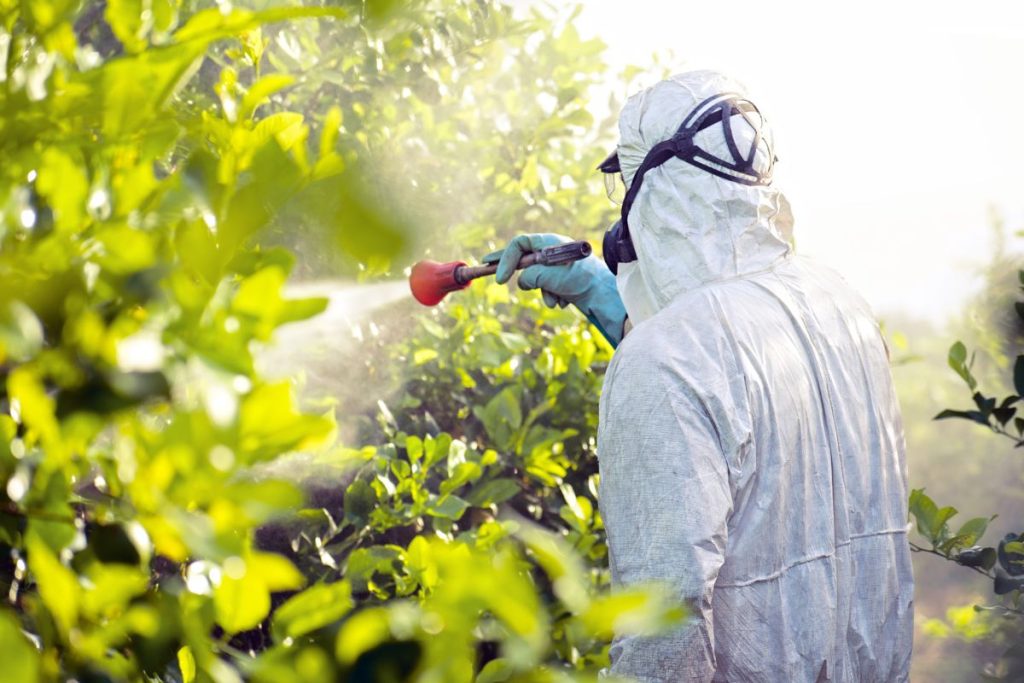
Moving on to the seventh reason, did you know that exposure to certain chemicals can also cause your mango to turn brown inside? Yep, it’s true!
Sometimes, mangoes are treated with chemicals to help preserve them and keep them looking fresh. While these chemicals are usually safe for consumption, they can sometimes cause the inside of the mango to turn brown.
This is especially true if the mango is exposed to high concentrations of these chemicals.
This can happen if the mangoes are sprayed with too much pesticide or if they’re washed with a strong chemical solution. So, while these treatments can help keep the mangoes looking good on the outside, they can sometimes have a negative effect on the inside of the fruit.
So, how can you avoid this? Well, one way is to buy organic mangoes. Organic mangoes are grown without the use of synthetic pesticides and fertilizers, so they’re less likely to have been exposed to these chemicals.
Remember, it’s always a good idea to wash your fruits thoroughly before eating them to remove any residues on the surface. And if you’re concerned about chemical exposure, going organic is a great option!
READ : The White Inside Watermelon: Is It Bad?
8-Poor Storage Conditions
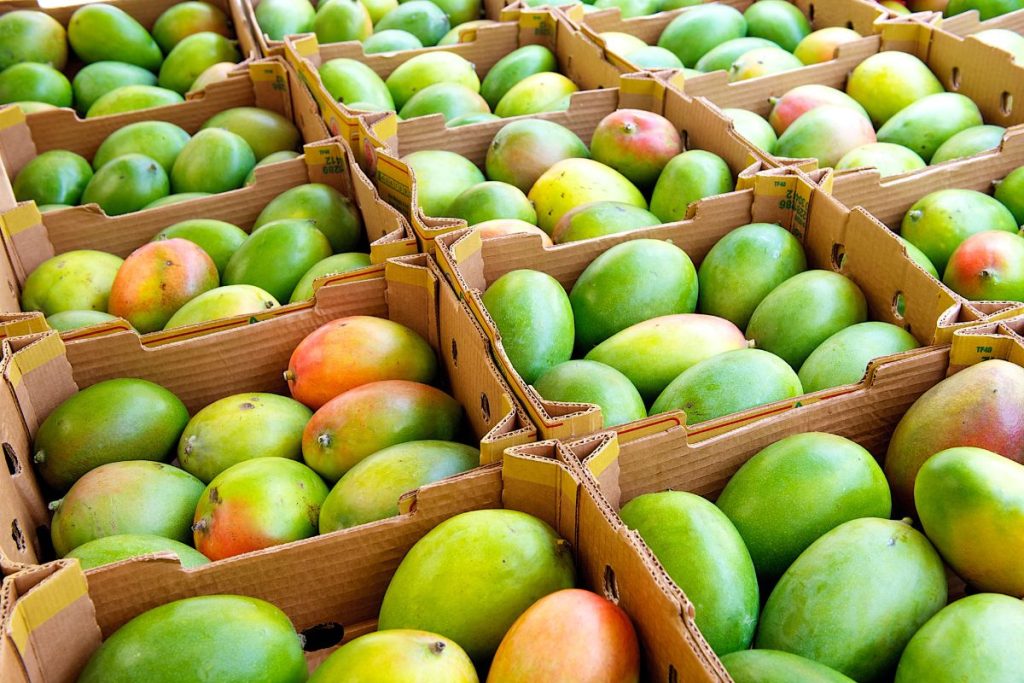
The eighth reason why your mango might be brown inside is due to poor storage conditions. Yes, how you store your mango can affect its quality!
Mangoes, like most fruits, need to be stored properly to maintain their freshness and quality.
If mangoes are stored in conditions that are too hot, too cold, too humid, or too dry, it can cause them to turn brown inside.
For example, if mangoes are stored in a place that’s too hot, it can cause them to overripen and turn brown.
On the other hand, if they’re stored in a place that’s too cold (like your fridge), it can cause the inside of the mango to turn brown.
So, how should you store your mangoes? Well, the best place to store them is at room temperature, away from direct sunlight.
Once they’re ripe, you can put them in the fridge to keep them fresh for a bit longer. But remember, don’t leave them in the fridge for too long, or they might turn brown!
So, the next time you bring home a bunch of mangoes, remember to store them properly. Your mangoes (and your taste buds) will thank you!
9-Nutritional Deficiency
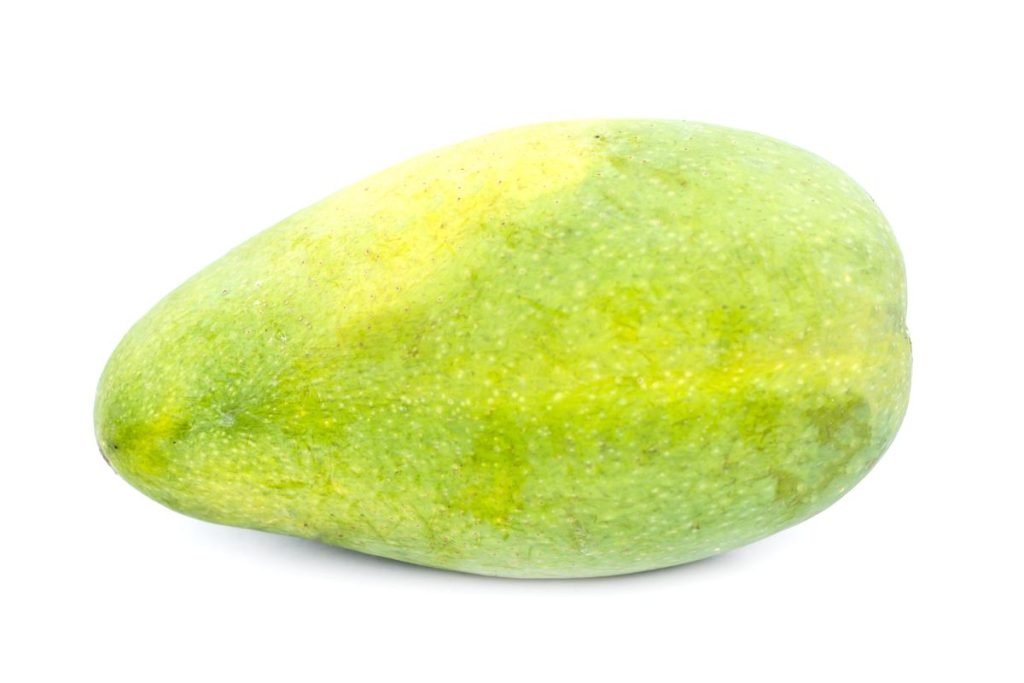
Finally, the ninth reason why your mango might be brown inside is due to a nutritional deficiency. Just like humans, plants need a balanced diet to stay healthy. If a mango tree doesn’t get the nutrients it needs, it can affect the quality of the fruit it produces.
Different nutrients play different roles in the health of a mango tree. For example, nitrogen helps the tree grow and produce leaves, while potassium helps with fruit development. [source].
If a mango tree doesn’t get enough of these nutrients, it can lead to problems like poor fruit quality and browning inside the mangoes.
So, how can you tell if a mango tree is deficient in nutrients? Well, it can be a bit tricky. Some signs of nutrient deficiency in mango trees include yellowing leaves, slow growth, and poor fruit production.
But these signs can also be caused by other problems, like disease or poor watering practices.
If you’re growing your own mangoes and you suspect a nutrient deficiency, it might be a good idea to get your soil tested. This can help you figure out what nutrients your soil is lacking and how to fix it.
So, there you have it – the nine surprising reasons why your mango might be brown inside. From overripe fruit to poor storage conditions, there are many factors that can affect the quality of your mangoes. But with a bit of knowledge and care, you can enjoy delicious, vibrant orange mangoes all season long!
Conclusion
Well, there you have it, folks! We’ve journeyed through the world of mangoes, uncovering the mysteries of why these tropical delights might sometimes be brown on the inside. From overripeness and bruising to improper storage and even disease, there are a myriad of reasons that can cause this.
But don’t let this deter you from enjoying your favorite fruit! Remember, a brown mango isn’t necessarily a bad mango. Sometimes, it’s just a sign that the mango is super ripe and ready to be turned into a delicious smoothie or dessert.
And hey, if you’re really not a fan of brown mangoes, now you know what to look out for. So the next time you’re at the grocery store, you’ll be a mango-selecting pro.
So, go forth and enjoy your mangoes, whether they’re perfectly orange or a little bit brown. After all, it’s what’s on the inside that counts, right?
And just to recap, here are some key points to remember:
A mango brown inside is not necessarily spoiled. It could be overly ripe or have been exposed to unfavorable conditions.
- Mangoes can have black spots or black lines due to bruising or disease.
- The color of a ripe mango is usually a vibrant orange. If your mango has white spots or is dark inside, it might be due to disease or poor storage conditions.
- An overripened mango can go brown after cutting, but it’s usually still safe to eat.
- If you see brown strings in a mango, it’s likely overripe.
- If you’re unsure about whether a mango is bad, look for signs like a moldy smell, a mushy texture, or an off taste.
- Mangoes usually last for about a week at room temperature, but they can last longer in the fridge.
So, the next time you’re wondering “why is my mango brown inside?”, you’ll know exactly what to look for. Happy mango munching!
FAQs:
What color is the inside of a mango?
The inside of a mango is typically a vibrant golden-yellow to orange color. The exact shade can vary depending on the variety of mango.
It should have a smooth, creamy texture and be free from discoloration, mold, or any signs of spoilage.
The flesh of a ripe mango is juicy and sweet, making it a delicious tropical fruit to enjoy.
Can you eat a mango if it’s brown on the inside?
If a mango is brown on the inside, it’s usually a sign of overripeness or spoilage, and it’s best not to eat it.
The brown flesh of a mango may have a mushy texture and an off taste. However, if the brown area is just a small part, it might be a bruise or a result of improper storage.
In this case, you can simply cut off the brown part and eat the rest. Always use your judgement— if it smells off or has mold, it’s best to discard it.
How do I know if my mango has gone bad?
There are several signs that a mango has gone bad:
- Color and Texture: If the skin has dark spots or is wrinkled, it may be overripe. The same is true if the fruit is overly soft to touch.
- Inside the Mango: When you cut into the mango, if the flesh has brown or black spots, or it’s overly mushy, it’s likely spoiled.
- Smell: Spoiled mangoes often have an off smell. A strong fermented or sour smell is a clear sign of spoilage.
- Mold: If there’s any sign of mold on the skin or inside, the mango has gone bad.
Always use a combination of these indicators, and when in doubt, it’s safer to discard the fruit.
What are the dark spots on mango skin?
The dark spots on mango skin are typically known as “lenticels.”
Lenticels are small pores or spots on the skin of fruits that allow for gas exchange.
They are a natural part of the mango’s skin and are not a cause for concern. Lenticels can vary in color, ranging from light tan to dark brown or black, and they may appear raised or slightly rough to the touch.
These spots do not indicate spoilage or affect the quality of the fruit inside.
Can I eat a mango with dark spots on it?
If a mango has dark spots on its skin, it doesn’t necessarily mean it is spoiled. However, it’s important to exercise caution and assess the overall condition of the mango.
If the dark spots are limited to the skin and the fruit inside appears firm, vibrant, and without any signs of mold or spoilage, it should be safe to eat.
You can simply cut off the affected areas and enjoy the rest of the mango.
However, if the dark spots extend into the flesh, the mango may be overripe or starting to spoil. In such cases, it’s best to discard the fruit to avoid any potential health risks.
Ultimately, trust your senses: examine the texture, smell, and appearance of the fruit, and if you have any doubts about its freshness or safety, it’s better to err on the side of caution and choose a different mango.
